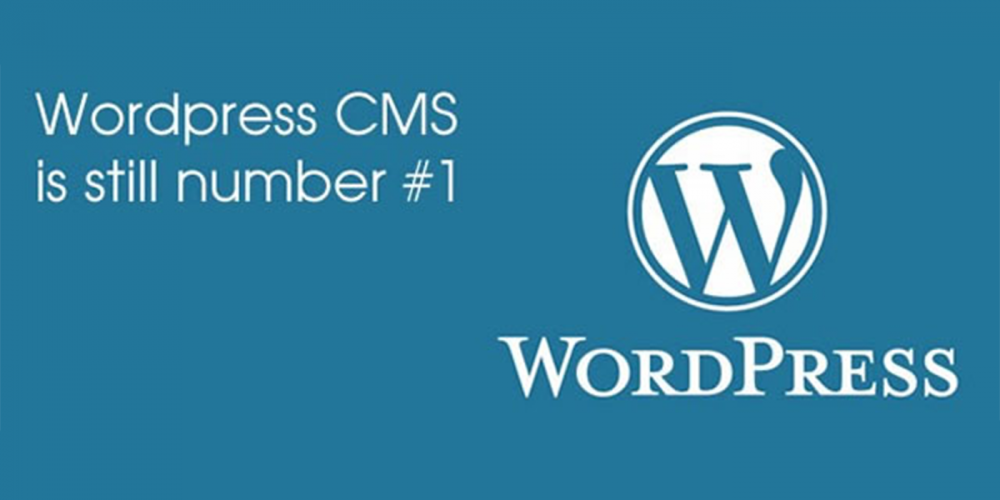


Released back in 2003 as an offshoot of a fairly successful blog engine called b2/cafelog, WordPress quickly started gaining market momentum and eventually propelled to the stardom of CMS systems to fuel a colossal number of sites, large and small, around the world. Throughout its 14-year history, the software has been consistently chosen by users for personal blogs, SMB websites and even much larger solutions whose design allowed the creation of batches of similar websites managed centrally.
According to various open sources, such as W3Techs or BuildWith, WordPress powered 27.3% to 38% of monitored websites as of January 2017 with a market share of over 50% of websites based on non-proprietary CMS’s, leaving all other content management systems FAR behind. Such a staggeringly wide margin cannot be attributed to a random factor or a passing trend – this seems to be completely consistent with the value that WordPress has been offering users all along. So what is it in this 14-year-old content management system that keeps users gravitating towards it? Let’s try to find out.
Among dozens of competing content management systems available on the market today, three products clearly stand out from the crowd and are truly recognizable brands: Joomla, Drupal and the subject of today’s article, WordPress. All of them are full-featured CMS’s allowing users to create great-looking websites with flexible content management capabilities – presumably, without writing a line of code. In reality, however, both Drupal and Joomla require substantial web development skills and general knowledge of the website building craft. Finally, they are all free, which means that you can experiment with them and even create a website without having to shell out thousands of dollars on a fully custom solution.
WordPress is famous for ease of installation. In fact, many hosting service providers will have an option of installing WordPress on your newly-purchased site in a fully automatic mode – and it will only take a few minutes before you see it in your browser. You can also download WordPress to your computer and install it locally to play with settings, experiment with themes and scope out your future blog or website.
When it comes to customization, WordPress offers a wealth of options through plug-ins and themes (more on them below), but doesn’t offer much “out of the box”, which may disappoint the more advanced users looking for full control over the appearance of the site right away. For the general public, however, the capabilities of the default package with a few plugins and a good theme will well suffice for building a blog or a modern-looking personal/promotional website that can be published within hours.
Deeper customization of WordPress is totally possible if you are familiar with PHP, MySQL, HTML and JS. In fact, you can find a lot of websites based on WordPress that don’t look like it at all, which proves that the platform is not only chosen for small DYI-style websites, but also as a reliable and highly-customizable core for more complex solutions.
Speaking of more complex solutions, WordPress is known to have been used by major companies like Discovery, TechCrunch and BBC America, which means that it’s by no means limited to personal use. Large companies opt for WordPress because it enables them to instantly roll out any number of compact, centrally-managed, content-focused mini-sites without investing much into custom development and having to use highly-qualified staff – sites can be rolled out and maintained by journalists, photographers or editors, letting in-house developers concentrate on more pressing needs.
At the same time, WordPress has always been a synonym for a rapidly-deployable site CMS engine, much like Xerox is for printing and iPhone for arguably the best mobile experience. Having spawned a brand of its own, it is used by millions of people across the globe for personal blogs and promo sites that look sharp (and expensive), are easy to update, are well protected from typical hacks, can be visually revamped within hours and are fully accessible to search engine bots for best online exposure.
WordPress may be simple from the first glance, but it’s the community and the army of WordPress developers that make it so powerful and versatile. With over 60 million users worldwide, the platform offers a mind-boggling 45,000+ plug-ins and over 4,000 themes capable of meeting any aesthetic goals. Plug-ins and themes can be installed even by novices and are capable of completely transforming the look and feel of any site, tailoring it for the needs of a particular user. Some of these add-ons are commercial, some free, but it’s more than likely that you should be able to build a WordPress site with extended functionality for as low as $100, which is clearly a bargain.
To top it off, if you are interested in deeper customization of the WordPress platform and leveraging the maximum of its potential, you won’t have any difficulty finding a professional web development company that will take care of the task from A to Z. In addition to their deep technical expertise, such companies can also offer full documentation, warranty and post-delivery maintenance at discounted rates.
WordPress’s fame as a highly successful blog-engine-turned-CMS is well-earned. It offers a virtually unlimited field for experiments for novices and DYI enthusiasts, and yet can be turned into the core of incomparably more complex solutions by competent developers.
Comments are Closed